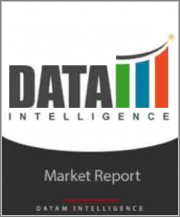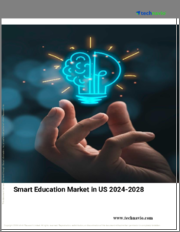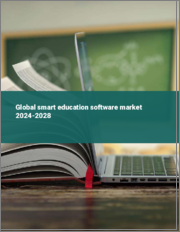
|
시장보고서
상품코드
1285081
세계의 하이브리드 학습 도구 시장(2023-2030년)Global Hybrid Learning Tools Market - 2023-2030 |
||||||
시장 개요
세계 하이브리드 학습 도구 시장은 2022년 4억 달러에 달했으며, 2030년에는 10억 달러에 달할 것으로 예상되며, 예측 기간(2023-2030년) 동안 10.8%의 CAGR을 나타낼 것으로 예상됩니다.
하이브리드 학습 도구 시장의 성장에는 교육 기술의 발전이 중요한 역할을 하고 있습니다. 학습관리시스템(LMS), 화상회의 플랫폼, 온라인 협업 도구, 가상현실(VR), 증강현실(AR), 인공지능(AI)과 같은 기술은 상호작용적이고 매력적인 하이브리드 학습 경험을 가능하게 합니다.
인도는 기술 전문성과 숙련된 전문가 풀을 활용하여 세계 하이브리드 학습 도구 시장 가치 성장에 큰 기여를 하고 있습니다. 인도는 전통적인 교실 수업과 디지털 도구 및 플랫폼을 결합한 하이브리드 학습 모델을 수용하고 있으며, 인도 기업들은 이 시장을 위한 혁신적인 솔루션을 개발하고 제공하는 데 중요한 역할을 담당하고 있습니다. 따라서 인도는 2022년 아시아태평양 시장 점유율의 1/4 이상을 차지할 것으로 예상되며, 예측 기간 동안 상당한 CAGR로 성장할 것으로 예상됩니다.
시장 역학
기업연수 및 전문인력 양성
하이브리드 학습 도구는 개인화되고 맞춤화된 학습 경험을 가능하게 하는 기능을 제공합니다. 직원들은 자신의 속도에 맞추어 학습을 진행하고, 특정 학습 요구에 초점을 맞추고, 자신의 역할과 기술 요구사항에 맞는 리소스에 접근할 수 있습니다. 개인화된 교육 프로그램을 제공할 수 있다는 것은 직원들의 참여도, 동기부여, 지식 유지율을 높여 하이브리드 학습 도구에 대한 수요를 증가시킬 수 있습니다.
많은 하이브리드 학습 도구는 학습 관리 시스템과 원활하게 통합되어 조직이 교육 프로그램을 쉽게 관리, 전달 및 추적할 수 있도록 도와줍니다. 이러한 통합을 통해 관리 간소화, 보고 자동화, 학습자 관리 효율화를 실현할 수 있으며, LMS 플랫폼과의 통합은 기업 교육 프로그램의 확장성과 효과성을 향상시켜 하이브리드 학습 도구 시장의 성장을 가속하고 있습니다.
지속적인 기술력 향상에 중점
하이브리드 학습 도구는 특정 기술에 초점을 맞춘 한 입 크기의 모듈, 마이크로 코스 및 단기 프로그램을 제공하여 지속적인 학습을 지원합니다. 학습자는 관심 있는 특정 분야나 새로운 기술에 초점을 맞추어 학습할 수 있습니다. 예를 들어, DataCamp는 데이터 과학 및 분석 과정에 특화된 간결하고 집중적인 강의를 제공합니다. 전문가들은 업무와 병행하여 학습을 진행하며 최신 업계 동향을 파악할 수 있습니다.
하이브리드 학습 도구는 개인 학습자에게만 국한된 것이 아닙니다. 조직은 직원의 성장과 경쟁력 유지를 위해 지속적인 기술 개발이 중요하다는 것을 인식하고 있습니다. 많은 플랫폼이 기업용 교육 솔루션을 제공하고 있으며, 기업들은 맞춤형 학습 프로그램을 통해 직원들의 역량을 강화할 수 있습니다. 예를 들어, LinkedIn Learning for Business와 Udacity for Enterprise는 기업이 방대한 코스와 학습 리소스 라이브러리에 접근할 수 있도록 지원합니다.
변화에 대한 저항과 전통적 교육방식
전통적인 교육 방식은 강의 위주의 접근 방식이 많고, 인터랙티브한 요소나 매력적인 요소는 제한적입니다. 교육자들이 전통적인 교수법을 고수하고 하이브리드 학습 도구가 제공하는 인터랙티브하고 협업적인 기능을 충분히 활용하지 않는다면, 변화에 대한 저항이 교육적 혁신의 부족으로 이어질 수 있습니다. 이로 인해 하이브리드 학습 도구의 잠재적 이점을 충분히 활용하지 못하고 세계 하이브리드 학습 도구 시장의 성장을 저해할 수 있습니다. 예를 들어, 변화에 저항하는 교육자들은 학생들의 학습 경험을 개인화할 수 있는 적응형 학습 플랫폼 사용의 이점을 간과할 수 있습니다.
교육기관이나 교육 시스템에는 전통적인 교육 방식을 지지하는 구조, 정책, 규제가 확립되어 있는 경우가 있습니다. 이러한 구조는 하이브리드 학습 도구의 도입과 통합에 장애가 될 수 있습니다. 예를 들어, 엄격한 커리큘럼 가이드라인이나 전통적인 시험이나 지필평가를 우선시하는 평가 시스템은 교육자들이 하이브리드 학습 접근법을 모색하고 실행하는 것을 방해할 수 있습니다.
COVID-19의 영향 분석
팬데믹으로 인해 교육 기술의 중요성이 부각되면서 하이브리드 학습 도구를 포함한 에듀테크 솔루션에 대한 투자가 증가했습니다. 교육기관, 정부 및 민간단체는 하이브리드 학습을 지원하는 디지털 도구의 개발 및 도입에 자금을 투입하여 급속한 혁신과 시장 확장을 가져왔습니다.
학습관리시스템(LMS)과 가상교실 도구를 포함한 온라인 학습 플랫폼은 코로나19 사태로 인해 수요가 급증했습니다. 이러한 플랫폼은 온라인 콘텐츠 제공, 과제 관리, 평가 실시, 학생과 교사 간의 교류 촉진 등의 인프라를 제공했습니다.
러시아-우크라이나 전쟁의 영향 분석
지정학적 갈등은 시장 변동과 불확실성을 초래하고 세계 비즈니스 환경에 영향을 미칩니다. 기업은 수요 변동, 고객 우선 순위의 변화, 교육 프로젝트 및 계약 지연 및 취소 등을 경험할 수 있으며, 이는 하이브리드 학습 도구 시장에서 이러한 기업의 재무 성과에 영향을 미칠 수 있습니다.
인공지능(AI)의 영향력 분석
AI 기반 자연어 처리(NLP)는 음성이나 텍스트를 통해 학습자와 하이브리드 학습 도구 간의 소통과 상호작용을 가능하게 합니다. 이 기술을 통해 학습자는 음성 기반 대화에 참여하고, 지능형 어시스턴트와 대화하고, 실시간 응답을 받을 수 있어 학습 과정을 보다 직관적이고 대화식으로 만들 수 있습니다. 교육자와 교육기관은 이 정보를 활용해 데이터 기반 의사결정을 내리고, 커리큘럼 설계를 최적화하며, 추가 지원이 필요한 영역을 파악할 수 있습니다.
따라서 AI는 하이브리드 학습 도구의 효과, 효율성, 접근성을 향상시킬 수 있으며, 개인화된 학습 경험을 촉진하고, 실시간 피드백과 지원을 제공하며, 데이터 기반 의사결정을 가능하게 하고, 관리 작업을 자동화함으로써 세계적으로 교육에 혁명을 일으킬 수 있습니다. 교육에 혁명을 일으켜 세계적으로 학습 성과를 향상시킬 수 있습니다.
목차
제1장 조사 방법과 범위
- 조사 방법
- 조사 목적 및 조사 범위
제2장 정의와 개요
제3장 주요 요약
- 유형별 시장 분석
- 최종사용자별 시장 분석
- 시장 분석 : 지역별
제4장 시장 역학
- 영향요인
- 촉진요인
- 성장 억제요인
- 기회
- 영향 분석
제5장 산업 분석
- Porter의 Five Forces 분석
- 공급망 분석
- 가격 분석
- 법규제 분석
제6장 COVID-19 분석
- COVID-19 분석
- COVID 이전의 시나리오
- COVID 기간의 시나리오
- COVID 이후의 시나리오
- COVID 기간의 가격 역학
- 수급 스펙트럼
- 팬데믹 기간의 시장에 관련된 정부 이니셔티브
- 제조업체의 전략적인 이니셔티브
- 요약
제7장 유형별
- 시스템
- 컨텐츠
- 강의
- 솔루션
- 기타
제8장 최종사용자별
- 교육기관
- 기업 연수
- 공교육
- 기타
제9장 지역별
- 북미
- 미국
- 캐나다
- 멕시코
- 유럽
- 독일
- 영국
- 프랑스
- 이탈리아
- 러시아
- 기타 유럽
- 남미
- 브라질
- 아르헨티나
- 기타 남미
- 아시아태평양
- 중국
- 인도
- 일본
- 호주
- 기타 아시아태평양
- 중동 및 아프리카
제10장 경쟁 구도
- 경쟁 시나리오
- 시장 현황/점유율 분석
- 인수합병(M&A) 분석
제11장 기업 개요
- D2L Corporation
- 기업 개요
- 제품 포트폴리오와 설명
- 재무 개요
- 주요 발전 상황
- Skillsoft
- Blackboard Inc.
- Cegos
- GP Strategies
- Microsoft Corporation
- Cisco Systems, Inc
- Schoology, Inc.
- Desire2Learn(Brightspace)
- ClassIn
제12장 부록
LSH 23.06.26Market Overview
The global hybrid learning tools market reached US$ 0.4 billion in 2022 and is expected to reach US$ 1.0 billion by 2030 and is growing at a CAGR of 10.8% during the forecast period (2023-2030).
The advancement of educational technology has played a crucial role in the growth of the hybrid learning tools market. Technologies such as learning management systems (LMS), video conferencing platforms, online collaboration tools, virtual reality (VR), augmented reality (AR) and artificial intelligence (AI) have enabled interactive and engaging hybrid learning experiences.
India has made significant contributions to the growth of the global hybrid learning tools market value by leveraging its technological expertise and a large pool of skilled professionals. The country has embraced hybrid learning models that combine traditional classroom teaching with digital tools and platforms and Indian companies have played a key role in developing and providing innovative solutions for this market. Therefore, India accounted for more than 1/4rd of Asia-Pacific market shares in 2022 and is expected to grow at a significant CAGR during the forecast period.
Market Dynamics
Corporate Training and Professional Development
Hybrid learning tools offer features that enable personalized and customized learning experiences. Employees can progress at their own pace, focus on their specific learning needs and access resources tailored to their roles and skill requirements. The ability to provide personalized training programs enhances engagement, motivation and knowledge retention among employees, driving the demand for hybrid learning tools.
Many hybrid learning tools seamlessly integrate with learning management systems, making it easier for organizations to manage, deliver and track training programs. The integration allows for streamlined administration, automated reporting and efficient learner management. This integration with LMS platforms enhances the scalability and effectiveness of corporate training programs, fueling the growth of the hybrid learning tools market.
Emphasis on Continuous Skill Development
Hybrid learning tools support continuous learning by offering bite-sized modules, micro-courses or short-term programs that focus on specific skills. Learners can target their learning efforts on specific areas of interest or emerging technologies. For instance, DataCamp specializes in data science and analytics courses, offering concise and focused lessons that professionals can complete alongside their work to stay updated with the latest industry trends.
Hybrid learning tools are not limited to individual learners. Organizations recognize the importance of continuous skill development for their employees' growth and to remain competitive. Many platforms offer corporate training solutions, enabling companies to upskill their workforce through customized learning programs. Examples include LinkedIn Learning for Business and Udacity for Enterprise, which provides organizations with access to a vast library of courses and learning resources.
Resistance to Change and Traditional Teaching Methods
Traditional teaching methods often follow a lecture-based approach, with limited interactive or engaging elements. Resistance to change can lead to a lack of pedagogical innovation, where educators stick to conventional teaching techniques and do not fully utilize the interactive and collaborative features offered by hybrid learning tools. This can hinder the growth of the global hybrid learning tools market, as the potential benefits of these tools may not be fully realized. For instance, educators who resist change may overlook the benefits of using adaptive learning platforms that personalize the learning experience for students.
Institutions and educational systems may have established structures, policies and regulations that favor traditional teaching methods. These structures can act as barriers to the adoption and integration of hybrid learning tools. For example, rigid curriculum guidelines or assessment systems that prioritize traditional exams and paper-based evaluations may discourage educators from exploring and implementing hybrid learning approaches.
COVID-19 Impact Analysis
The pandemic highlighted the importance of educational technology and prompted increased investment in ed-tech solutions, including hybrid learning tools. Educational institutions, governments, and private organizations directed funds toward the development and implementation of digital tools to support hybrid learning, resulting in rapid innovation and expansion of the market.
Online learning platforms, including learning management systems (LMS) and virtual classroom tools, experienced a surge in demand during the pandemic. These platforms provided the infrastructure for delivering online content, managing assignments, conducting assessments and facilitating interaction between students and teachers.
Russia-Ukraine War Impact Analysis
Geopolitical conflicts can create market volatility and uncertainty, affecting business environments globally. Companies may experience fluctuations in demand, shifts in customer priorities and delays or cancellations of educational projects or contracts, which could impact the financial performance of these players in the hybrid learning tools market.
Artificial Intelligence Impact Analysis
AI-based natural language processing (NLP) enables communication and interaction between learners and hybrid learning tools through speech and text. This technology allows learners to engage in voice-based conversations, interact with intelligent assistants and receive real-time responses, making the learning process more intuitive and conversational. Educators and institutions can leverage this information to make data-driven decisions, optimize curriculum design and identify areas where additional support may be required.
Therefore, AI has the potential to enhance the effectiveness, efficiency and accessibility of hybrid learning tools. It can facilitate personalized learning experiences, provide real-time feedback and support, enable data-driven decision-making and automate administrative tasks, thereby revolutionizing education and improving learning outcomes on a global scale.
Segment Analysis
The global hybrid learning tools market is segmented based on type, end-user and region.
Growing Popularity of Online Learning and Digitalization has Accelerated the Growth of the Educational Institutes
Educational institutes have increasingly embraced blended learning models that combine traditional face-to-face instruction with online learning components. Blended learning allows institutions to leverage the benefits of both in-person interaction and online resources. Hybrid learning tools play a vital role in supporting the implementation of blended learning models by providing digital platforms, learning management systems (LMS) and collaboration tools.
Institutions can use these tools to manage course content, facilitate online discussions, deliver multimedia resources and track student progress. Notable developments include institutions adopting LMS platforms like Canvas, Blackboard or Moodle to support blended learning environments. Furthermore, corporate training is the second largest segment, which was accounting for more than 27.1% of the total global segmental share in 2022, and is expected to grow ata highest CAGR among all end-user segments globally.
Geographical Analysis
Advanced Digital Learning Platforms and Rising Investments in Educational Learning Drive the Growth of the North American Hybrid Learning Tools Market
Many educational institutions in the U.S., ranging from K-12 schools to universities, have embraced blended learning models. These models leverage hybrid learning tools to combine in-person instruction with online resources and activities. Blended learning allows for personalized learning pathways, interactive multimedia content, and differentiated instruction, catering to diverse student needs.
The implementation of hybrid learning models has been facilitated by the availability of robust digital learning platforms and increased awareness of their benefits. The U.S. is a potential player for the North America hybrid learning tools market, which accounts for approximately 81.8% of the regional market share and is expected to grow at the highest CAGR during the forecast period in the region.
Competitive Landscape
The major global players include: JSP Corporation, BASF SE, Kaneka Corporation, DS Smith plc, Furukawa Electric Co., Ltd., Hanwha Corporation, Sonoco Products Company, Knauf Industries, Dongshin Industry, Inc., and Clark Foam Products Corporation.
Why Purchase the Report?
- To visualize the global hybrid learning tools market segmentation based on type, end-user and region, as well as understand key commercial assets and players.
- Identify commercial opportunities by analyzing trends and co-development.
- Excel data sheet with numerous data points of hybrid learning tools market level with all segments.
- PDF report consists of a comprehensive analysis after exhaustive qualitative interviews and an in-depth study.
- Product mapping available as Excel consisting of key products of all the major players.
The global hybrid learning tools market report would provide approximately 53 tables, 50 figures and 180 Pages.
Target Audience 2023
- Manufacturers/ Buyers
- Industry Investors/Investment Bankers
- Research Professionals
- Emerging Companies
Table of Contents
1. Methodology and Scope
- 1.1. Research Methodology
- 1.2. Research Objective and Scope of the Report
2. Definition and Overview
3. Executive Summary
- 3.1. Market Snippet by Type
- 3.2. Market Snippet by End-User
- 3.3. Market Snippet by Region
4. Dynamics
- 4.1. Impacting Factors
- 4.1.1. Drivers
- 4.1.1.1. Corporate Training and Professional Development
- 4.1.1.2. Emphasis on Continuous Skill Development
- 4.1.2. Restraints
- 4.1.2.1. Resistance to Change and Traditional Teaching Methods
- 4.1.3. Opportunity
- 4.1.4. Impact Analysis
- 4.1.1. Drivers
5. Industry Analysis
- 5.1. Porter's Five Force Analysis
- 5.2. Supply Chain Analysis
- 5.3. Pricing Analysis
- 5.4. Regulatory Analysis
6. COVID-19 Analysis
- 6.1. Analysis of COVID-19
- 6.1.1. Scenario Before COVID
- 6.1.2. Scenario During COVID
- 6.1.3. Scenario Post COVID
- 6.2. Pricing Dynamics Amid COVID
- 6.3. Demand-Supply Spectrum
- 6.4. Government Initiatives Related to the Market During Pandemic
- 6.5. Manufacturers Strategic Initiatives
- 6.6. Conclusion
7. By Type
- 7.1. Introduction
- 7.1.1. Market Size Analysis and Y-o-Y Growth Analysis (%), By Type
- 7.1.2. Market Attractiveness Index, By Type
- 7.2. System*
- 7.2.1. Introduction
- 7.2.2. Market Size Analysis and Y-o-Y Growth Analysis (%)
- 7.3. Content
- 7.4. Courses
- 7.5. Solution
- 7.6. Others
8. By End-User
- 8.1. Introduction
- 8.1.1. Market Size Analysis and Y-o-Y Growth Analysis (%), By End-User
- 8.1.2. Market Attractiveness Index, By End-User
- 8.2. Education Institutes*
- 8.2.1. Introduction
- 8.2.2. Market Size Analysis and Y-o-Y Growth Analysis (%)
- 8.3. Corporate Training
- 8.4. Public Education
- 8.5. Others
9. By Region
- 9.1. Introduction
- 9.1.1. Market Size Analysis and Y-o-Y Growth Analysis (%), By Region
- 9.1.2. Market Attractiveness Index, By Region
- 9.2. North America
- 9.2.1. Introduction
- 9.2.2. Key Region-Specific Dynamics
- 9.2.3. Market Size Analysis and Y-o-Y Growth Analysis (%), By Type
- 9.2.4. Market Size Analysis and Y-o-Y Growth Analysis (%), By End-User
- 9.2.5. Market Size Analysis and Y-o-Y Growth Analysis (%), By Country
- 9.2.5.1. The U.S.
- 9.2.5.2. Canada
- 9.2.5.3. Mexico
- 9.3. Europe
- 9.3.1. Introduction
- 9.3.2. Key Region-Specific Dynamics
- 9.3.3. Market Size Analysis and Y-o-Y Growth Analysis (%), By Type
- 9.3.4. Market Size Analysis and Y-o-Y Growth Analysis (%), By End-User
- 9.3.5. Market Size Analysis and Y-o-Y Growth Analysis (%), By Country
- 9.3.5.1. Germany
- 9.3.5.2. The U.K.
- 9.3.5.3. France
- 9.3.5.4. Italy
- 9.3.5.5. Russia
- 9.3.5.6. Rest of Europe
- 9.4. South America
- 9.4.1. Introduction
- 9.4.2. Key Region-Specific Dynamics
- 9.4.3. Market Size Analysis and Y-o-Y Growth Analysis (%), By Type
- 9.4.4. Market Size Analysis and Y-o-Y Growth Analysis (%), By End-User
- 9.4.5. Market Size Analysis and Y-o-Y Growth Analysis (%), By Country
- 9.4.5.1. Brazil
- 9.4.5.2. Argentina
- 9.4.5.3. Rest of South America
- 9.5. Asia-Pacific
- 9.5.1. Introduction
- 9.5.2. Key Region-Specific Dynamics
- 9.5.3. Market Size Analysis and Y-o-Y Growth Analysis (%), By Type
- 9.5.4. Market Size Analysis and Y-o-Y Growth Analysis (%), By End-User
- 9.5.5. Market Size Analysis and Y-o-Y Growth Analysis (%), By Country
- 9.5.5.1. China
- 9.5.5.2. India
- 9.5.5.3. Japan
- 9.5.5.4. Australia
- 9.5.5.5. Rest of Asia-Pacific
- 9.6. Middle East and Africa
- 9.6.1. Introduction
- 9.6.2. Key Region-Specific Dynamics
- 9.6.3. Market Size Analysis and Y-o-Y Growth Analysis (%), By Type
- 9.6.4. Market Size Analysis and Y-o-Y Growth Analysis (%), By End-User
10. Competitive Landscape
- 10.1. Competitive Scenario
- 10.2. Market Positioning/Share Analysis
- 10.3. Mergers and Acquisitions Analysis
11. Company Profiles
- 11.1. D2L Corporation*
- 11.1.1. Company Overview
- 11.1.2. Product Portfolio and Description
- 11.1.3. Financial Overview
- 11.1.4. Key Developments
- 11.2. Skillsoft
- 11.3. Blackboard Inc.
- 11.4. Cegos
- 11.5. GP Strategies
- 11.6. Microsoft Corporation
- 11.7. Cisco Systems, Inc
- 11.8. Schoology, Inc.
- 11.9. Desire2Learn (Brightspace)
- 11.10. ClassIn
LIST NOT EXHAUSTIVE
12. Appendix
- 12.1. About Us and Services
- 12.2. Contact Us



















